-
Factors that Increase Your Risk of Basement Water Damage
The winter season has arrived in Baltimore, and it is important to make sure that your home is protected from water damage. A flooded basement can result in significant damage to your home, ranging from moisture issues to mold growth and more. With the help of a company offering basement waterproofing serving Baltimore , you can rest assured that you will not be in need of mold remediation or other emergency waterproofing basement procedures. To help you determine whether your home is in need of basement waterproofing, here is an overview of some of the factors that may increase your risk of water damage in your basement.
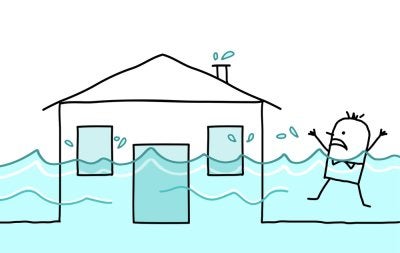
Extreme Weather Conditions
Oftentimes, basement flooding is caused by extreme weather conditions. For example, when your area is subjected to a heavy rainstorm, rainwater could begin pooling around your foundation. If your foundation has not been properly sealed, this water could begin to leak into your basement. To protect your home against rain related water damage, it is a good idea to schedule basement waterproofing services before the start of the storm season.
Improper Property Grade
The grade of your property is a term that describes the overall slope of your yard and foundation. Ideally, your property grade should slope evenly away from your foundation and basement. In the event that your grade slopes towards your foundation, you may find that your basement experiences flooding after a rainstorm. Water pooling around your foundation is a top sign that you may have property grade issues.
Sewer Backups
A sewer backup is a home emergency that can cause significant flooding to your basement. When your sewer backs up, wastewater could begin to enter your basement’s indoor spaces. To prevent a sewer backup from damaging your home, it is a good idea to schedule regular plumbing services. Your plumber can identify whether your sewer line is at risk of clogging or breaking. By keeping track of the main causes of basement flooding, you can avoid a water damage emergency this winter.
-
Answering Common Questions About Crawl Space Moisture
While your crawl space may not concern you on a day-to-day basis, it is important to be on the lookout for the signs of crawl space moisture. By scheduling crawlspace waterproofing in Baltimore, you can prevent moisture from damaging your foundation, basement, and other areas of your home. Some of the common crawlspace waterproofing techniques are crawl space encapsulation and the installation of a crawl space dehumidifier. Read on for answers to some of the most common questions about crawl space moisture.

What Causes Crawl Space Moisture?
When you are dealing with crawl space moisture issues , you may be wondering what has caused your water problem in the first place. There are two common culprits of crawl space moisture. Sometimes, wetness in a crawl space can be caused by flooding rainwater. Additionally, crawl space moisture can also be related to plumbing issues throughout the home. Your crawl space waterproofing technician will be able to pinpoint the cause of your moisture problem.
Why Is Crawl Space Moisture a Concern?
Since the crawl space is one of the least accessible parts of a home, it may not be clear as to why it is important to waterproof this area. In fact, moisture in a crawl space can lead to structural problems in your home’s foundation and other critical areas. Additionally, a damp crawl space can also lead to a mold infestation throughout your home. When you suspect that your crawl space may have excess moisture, you should not hesitate to address the issue.
How Can Crawl Space Moisture Be Repaired?
There are several different methods that can be used to repair moisture in a crawl space. First, your technician will need to gain access to the crawlspace vapor barrier. Once the vapor barrier has been removed, a sump pump will be used to remove any excess water from the crawl space. Once the crawl space has been completely dried, the vapor barrier will be reinstalled.
-
Sump Pumps 101
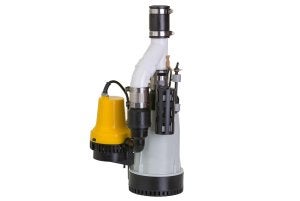 The sump pump is one of the most important pieces of equipment for preventing severe water damage to a property. The sump pump is a small pump installed in the low part of a basement or crawlspace. It collects water that flows into the sump pit, pumping it away from the building to keep the building dry and prevent flooding. To learn more about sump pumps near Baltimore , read on. And for quality sump pump repair, replacement, or installation, contact Storm Waterproofing.
The sump pump is one of the most important pieces of equipment for preventing severe water damage to a property. The sump pump is a small pump installed in the low part of a basement or crawlspace. It collects water that flows into the sump pit, pumping it away from the building to keep the building dry and prevent flooding. To learn more about sump pumps near Baltimore , read on. And for quality sump pump repair, replacement, or installation, contact Storm Waterproofing.Flooded Basements
The American Society of Home Inspectors found that more than 60 percent of homes in the United States experience below-ground wetness. Knowing this, it’s not surprising that most homeowners have to deal with water in the basement at some point. Unfortunately, water can cause extensive property damage, and may require home mold remediation.
How a Sump Pump Works
A sump pump is placed in the sump pit, a hole located in the lowest part of the basement or crawlspace that is approximately two feet deep. When water starts to fill the pit, a pressure sensor turns the pump on. This pulls the water out of the sump pit and relocates it to a drain spot away from the foundation. The pipe is oftentimes equipped with a check valve that keeps water from flowing back into the sump pit. Most sump pumps use a centrifugal pump to relocate water. The motor causes the impeller to turn, which pushes the water to the sides of the pipe and creates a low-pressure area in the center. Water from the sump pit is pulled to this area to fill the pressure void.
Sump Pump Design
There are two types of sump pumps. Submersible pumps sit in water, protected by waterproof housing. When the pump turns on, it sucks water through the gate and into the pipe, which routes it to an area outside of the home. Pedestal pumps, on the other hand, are located away from the water, even when the pit is full. These pumps are louder, but less expensive, than submersible pumps.
-
Understanding the Complexity of Mold Removal
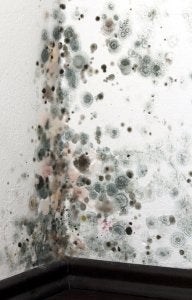 Having mold on your property can lead to health problems and even property damage. If you notice any signs of mold growth in your home, schedule mold remediation in Baltimore right away. Continue reading to learn more about the involved process of mold removal, and why it requires professional equipment and training.
Having mold on your property can lead to health problems and even property damage. If you notice any signs of mold growth in your home, schedule mold remediation in Baltimore right away. Continue reading to learn more about the involved process of mold removal, and why it requires professional equipment and training.Before removing mold, a home mold remediation expert will put on protective gear and thoroughly inspect the home for signs of mold growth. Once areas of mold growth are identified, they must be isolated from other areas of the home before mold cleaning can begin. Otherwise, the process of cleaning mold in one area of the house can cause mold to simply migrate to other areas of the home. In worst cases, mold can start growing in a home’s HVAC system and ductwork. This allows mold spores to be circulated throughout the home, which encourages mold growth in other areas of the home. After cleaning the mold, a mold removal expert will apply a treatment that can limit or prevent future mold growth.
-
How Your Basement and Crawl Space Affect Your Indoor Air Quality
The type of foundation used to build the home, as well as how well it is maintained and kept dry, can affect the indoor air quality of the home. Fortunately, you can keep your basement and crawlspace maintained by scheduling crawlspace waterproofing or basement waterproofing in Baltimore . Watch this video to learn more about how the basement and crawlspace affect indoor air quality.
Mold can start to grow if too much moisture gets into the crawlspace or basement. To avoid needing mold removal services, schedule sump pump maintenance every year. Furthermore, route the dryer exhaust outside the home, rather than in the basement or crawl space. Lastly, have your crawlspace or basement inspected annually, or if you notice signs of water damage, such as water spots, a musty smell, or visible mold growth.
-
Is Your Crawl Space at Risk of Suffering Water Damage?
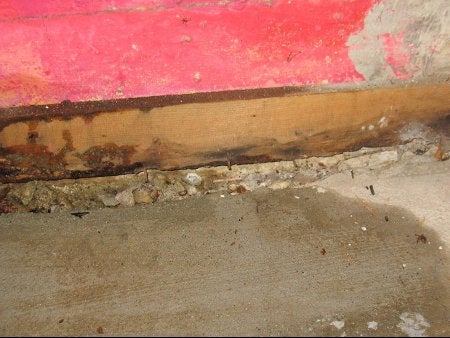 If you have ever had water damage in your home, then you already know it can be a huge pain. Crawl spaces, in particular, are prone to suffering water damage, especially if they are not regularly inspected and treated. Fortunately, you can schedule a professional inspection and crawl space encapsulation service to greatly reduce the likelihood of water damage. For quality crawl space waterproofing in Baltimore , contact Storm Waterproofing.
If you have ever had water damage in your home, then you already know it can be a huge pain. Crawl spaces, in particular, are prone to suffering water damage, especially if they are not regularly inspected and treated. Fortunately, you can schedule a professional inspection and crawl space encapsulation service to greatly reduce the likelihood of water damage. For quality crawl space waterproofing in Baltimore , contact Storm Waterproofing.Symptoms of Water Damage
If you see water in the basement or crawlspace, call a waterproofing company right away. If you notice damp or humid air, a musty smell, or the growth of mold or mildew, these are also signs that you have excess moisture—which can be a precursor to or a symptom of water damage . Damp walls, dripping water, water spots, and rotting floors are signs that there is a water problem that needs to be taken care of immediately. In the worst cases, sewage may actually come up through the drain, which is a possible indicator that your crawlspace is at risk for water damage.
Cracked Foundation or Walls
Moisture can easily enter a home through cracks in the walls or foundation. This is why it is important to inspect the crawl space to ensure that even the smallest cracks are sealed. Have cracks repaired as soon as possible to prevent water damage.
Broken Water Lines
The sinks, toilets, showers, and other plumbing appliances in your home draw water from the water lines and water heaters on your property. If these lines are worn out, punctured, or frozen, then your crawl space is at risk of suffering water damage. A broken water heater can also put your crawl space at risk for water damage.
Improper Slope of Property
Homes are ideally designed with a graded slope so that ground water is directed away from the foundation of the home. If the home has a poorly designed slope, or if erosion changes the grading of your property, it can cause water to flow into your crawl space or basement.
-
Should You Install a Sump Pump?
 If you live in the Baltimore, the answer to this question is a resounding yes. Sump pumps are the best line of defense against basement flooding, which can result in hundreds or even thousands of dollars in water damage including mold growth and structural decay. If your basement sits below the nearby water table, or if your landscaping and gutter system causes rain water to pool around your home’s foundation, a sump pump is crucial for preventing basement flooding.
If you live in the Baltimore, the answer to this question is a resounding yes. Sump pumps are the best line of defense against basement flooding, which can result in hundreds or even thousands of dollars in water damage including mold growth and structural decay. If your basement sits below the nearby water table, or if your landscaping and gutter system causes rain water to pool around your home’s foundation, a sump pump is crucial for preventing basement flooding.In addition to installing a sump pump, you should consider other basement waterproofing measures to further reduce your risk of experiencing basement flooding and moisture-related damage. A basement waterproofing company in Baltimore can discuss such option as interior wall coatings, epoxy injections, and exterior foundation waterproof sealants.
-
Reducing the Risk of Moisture Damage in Your Basement
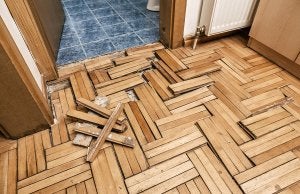 Although every house is different, it’s virtually guaranteed that homes in Baltimore will experience problems with moisture in the basement . The good news is that steps can be taken to block water and moisture and reduce the risk of experiencing moisture-related basement damage, including mold growth and weakened structural supports. Depending on the location of your home and the waterproofing measures already in place, prevention can range in size and scope from rerouting a drain spout to excavating and waterproofing the exterior of your foundation. In addition to working with a basement waterproofing company in Baltimore to prevent basement flooding, here are some steps you can take to reduce your risk of moisture damage.
Although every house is different, it’s virtually guaranteed that homes in Baltimore will experience problems with moisture in the basement . The good news is that steps can be taken to block water and moisture and reduce the risk of experiencing moisture-related basement damage, including mold growth and weakened structural supports. Depending on the location of your home and the waterproofing measures already in place, prevention can range in size and scope from rerouting a drain spout to excavating and waterproofing the exterior of your foundation. In addition to working with a basement waterproofing company in Baltimore to prevent basement flooding, here are some steps you can take to reduce your risk of moisture damage.Add Insulation
An easy and affordable first step towards reducing the risk of moisture damage is adding insulation in your basement. When combined with a dehumidifier, basement insulation can prevent condensation and lower the amount of humidity in the basement.
Keep Gutters Clean
If you’re looking for an even more affordable way to prevent water damage in your basement, simply keep your gutters clean. Gutters that are clogged with leaves and other debris can cause rainwater to overflow and pool around your home’s foundation, which greatly increase the risk of seepage and ultimately water damage.
Correct Your Landscaping
It’s important that the ground around your home is sloped away from the foundation wall, otherwise rain water and irrigation will flow towards your home and pool around the foundation. Correcting your landscaping may require hard work and some big equipment rentals, but it’s worth the time and effort to reduce your risk of basement water damage.
Further Measures
When you’ve done all that you can to prevent basement flooding, bring in a professional to learn about additional basement waterproofing measures you can take to reduce your risk of basement water damage. Depending on several different factors, you may consider such options as interior or exterior waterproof coatings or the installation of a French drain system.
-
Why Basement Waterproofing is a Smart Investment
Nearly all below-grade basements are prone to water leakage. Although minor leaks and humidity problems aren’t a major concern, basements that are in danger of flooding can experience severe damage that is typically very expensive to repair. That’s why basement waterproofing is a smart investment for home’s that are in danger of experiencing basement flooding, since the waterproofing measures themselves are much less expensive than the total number of water damage repairs that may be required over the life of the basement. Watch this short video to learn more about basement waterproofing.
You can discuss the benefits of basement waterproofing and the costs associated with different waterproofing solutions by contacting a water damage repair company in Baltimore that specializes in such waterproofing measures. The sooner you hire basement contractors to waterproof your basement, the less likely you will be to experience costly water damage resulting from leaks, flooding, and other moisture-related problems.
-
Choosing a Basement Waterproofing Solution
 Weeping walls, crumbling concrete blocks, water stains, and the unmistakable odor of mold are just a few of the signs that your basement has a moisture issue. Fortunately, a basement waterproofing company in Baltimore can quickly seal up your basement to prevent more serious water-related damage in the future. As you begin to research basement waterproofing in Maryland, you’ll quickly find out that there are many different solutions to choose from. The right solution will ultimately depend on a number of different factors, including your budget and the condition of your basement. Your waterproofing contractor can help you choose which solution is the best fit. In the meantime, read this short post to learn more about the different waterproofing solutions you can choose from.
Weeping walls, crumbling concrete blocks, water stains, and the unmistakable odor of mold are just a few of the signs that your basement has a moisture issue. Fortunately, a basement waterproofing company in Baltimore can quickly seal up your basement to prevent more serious water-related damage in the future. As you begin to research basement waterproofing in Maryland, you’ll quickly find out that there are many different solutions to choose from. The right solution will ultimately depend on a number of different factors, including your budget and the condition of your basement. Your waterproofing contractor can help you choose which solution is the best fit. In the meantime, read this short post to learn more about the different waterproofing solutions you can choose from.Interior Sealants
One of the most common entry points for water is through cracks in the concrete foundation. Depending on the size and location of these cracks, it may be possible to seal them from the inside using specially formulated sealants or epoxy injections. Although sealants and injections are good at preventing leaks and humidity, they are not suitable if there is strong water pressure pushing against the foundation.
Exterior Waterproofing
In some cases, it may be necessary to excavate around your home and apply a waterproof coating along the foundation. This coating acts as a waterproof barrier that prevents water from seeping through into the basement. Although exterior waterproofing is a more expensive solution than interior sealants and injections, it is leaps and bounds more effective at stopping water from entering the basement through the foundation.
Interior and Exterior Drainage
A proper drainage system is the best line of defense against water in the basement. If you don’t already have a sump pump system installed in your basement, contact a basement waterproofing company in Baltimore that specializes in these waterproofing systems. And if you do have a sump pump, make sure it’s kept in good working condition to prevent basement flooding .
